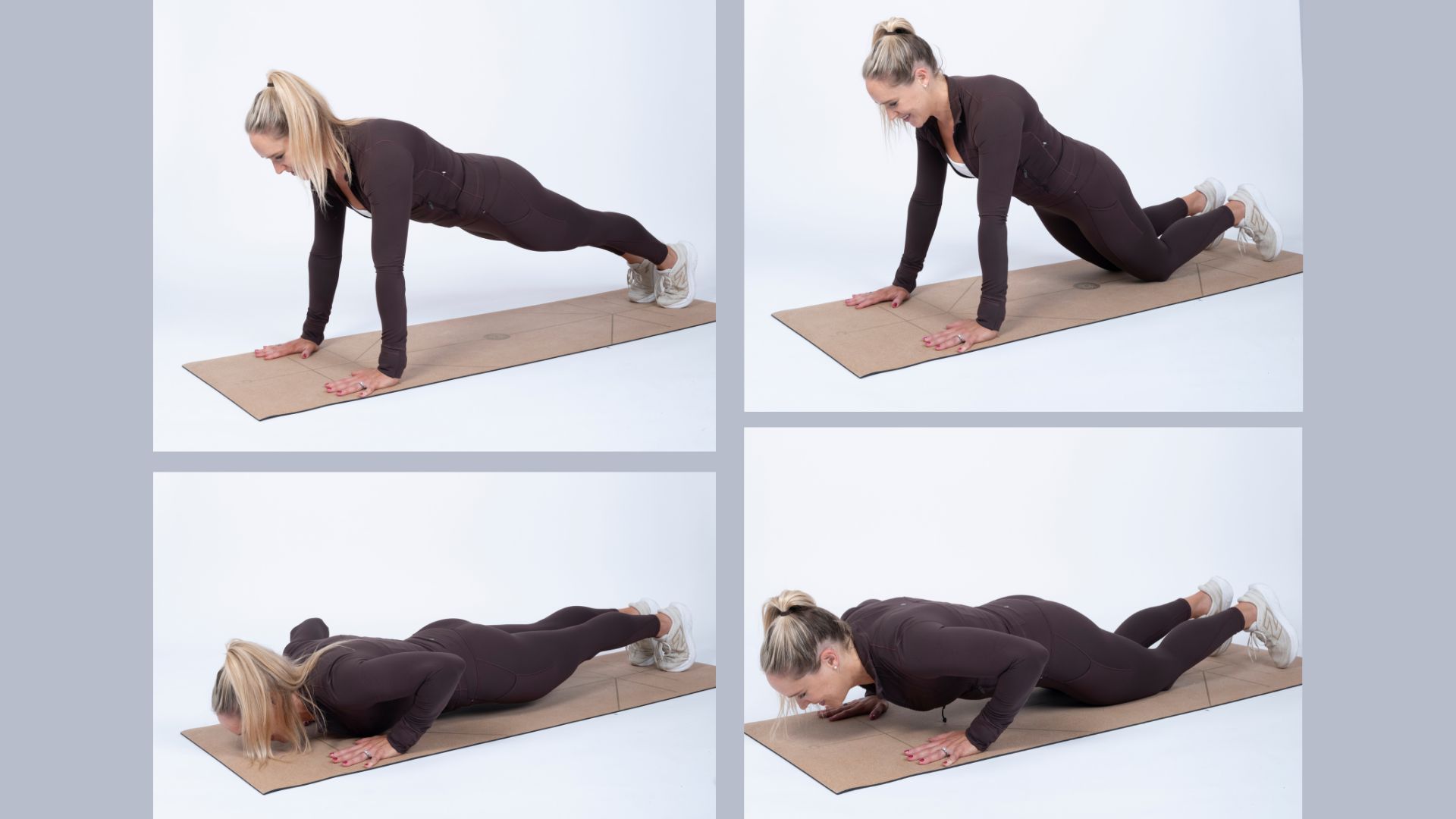
Push-ups are a mainstay of upper-body workouts. You'll find them in most workout plans but, despite what some personal trainers suggest, they are actually not the easiest exercise to do.
A push-up requires strong shoulders, arms, back, and core muscles, which need proper training. The good news is that you can build up to doing a push-up slowly and strengthen these areas without dumbbells or kettlebell weights. Once you've done one, you'll find it easier to add repetitions in a general strength training program for women.
These exercises are great for building upper body strength, says Sarah Campus, a PT specialising in women's fitness. "They also engage the core, which improves stability, they require no equipment and can be done anywhere, help develop functional strength for real-life movement, and they can be easily modified to match fitness levels," she says.
With Sarah's help, we've created a 30-day challenge to help you start strength training at home by perfecting your push-ups. All you need are some spare minutes and a pick of the best thick yoga mats to stay comfortable.
How to do a push-up properly
1. Wall push ups
You may recognise this starter push-up from a wall Pilates workout. It'll get you used to engaging your core and help strengthen your chest, shoulders and arms. "It's great for absolute beginners," says Campus.
Here's how to do it:
- Stand up straight and press your palms comfortably against the wall in front of you.
- Take a step back so you can comfortably lean towards the wall. The closer you are to the wall, the easier the push up will be, so make sure you're standing far enough away to feel some weight supported in your arms.
- Slowly bend your elbows and lower your chest toward the wall, keeping your core engaged.
Alternatively, you can try incline push-ups, using your kitchen countertop or a bench for support instead of the wall. "Place your hands on a raised surface like this to reduce difficulty," says Campus, who is also the founder of LDN MUMS FITNESS.
Doing this as an exercise snack throughout the day can help you boost strength and stability, but consistency and frequency are key. "Practising push-up variations like this one three to five times per week minimum will speed up progress," she says.
2. Knee push-ups
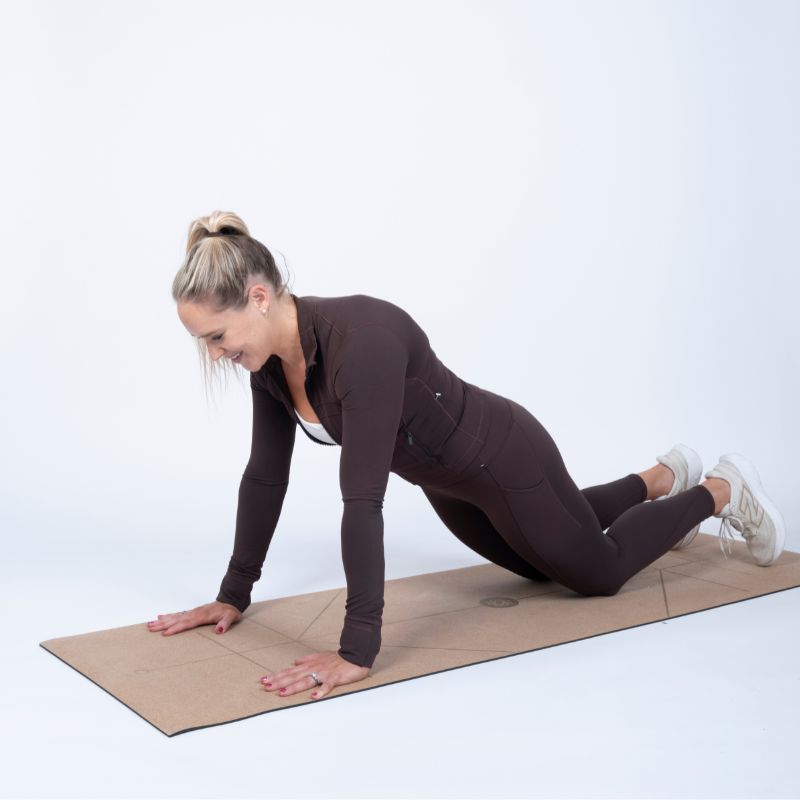
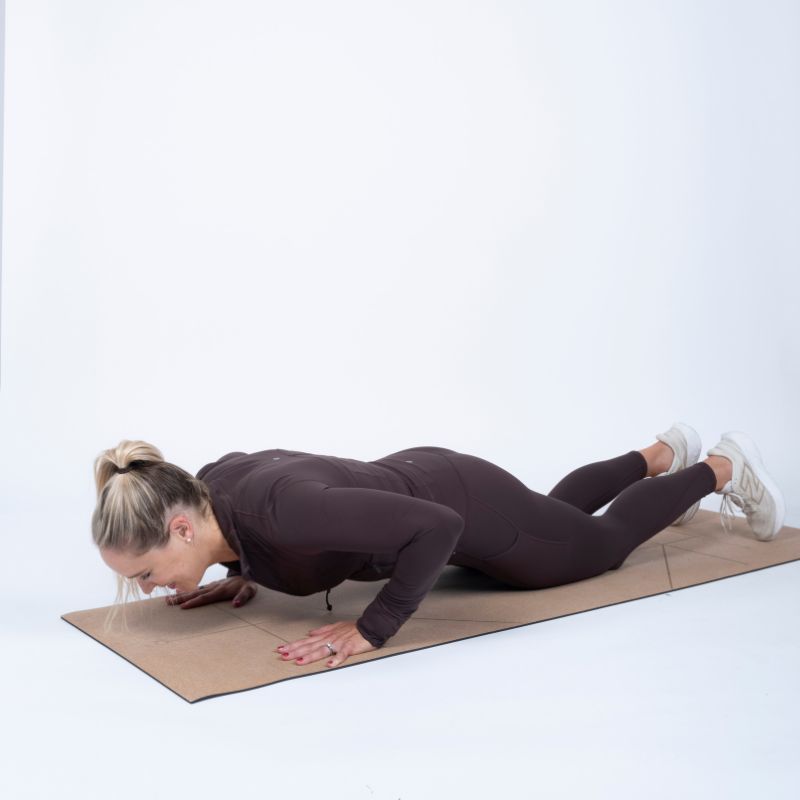
Not sure how to 'engage' your core? Start by lying face-up on the ground, knees bent, feet flat on the floor. Press your tailbone into the ground, allowing your lower back to come up slightly. Breathe in. Once your stomach feels 'full' with air, tighten your ab muscles, keeping your tailbone on the ground. Pull your stomach up and in. Now your core is engaged, take a couple of deep breaths to see how it'll feel when you're doing a press-up.
If you want to learn how to do a squat correctly or other bodyweight exercises, this will be very handy then too.
As the name suggests, this is a push-up done using your knees for support. It's a static exercise designed to prepare your muscles and shoulder joint stabilisers for the bottom position of the press-up, where your muscles are at their full stretch and the weakest point.
Ensuring your tummy muscles are pulled towards your spine during the exercise (also known as engaging your core) will ensure you don’t injure your back.
Here's how to do a knee push-up:
- Take the plank position on your yoga mat with your hands shoulder-width apart, ensuring you have a neutral spine. Then drop your knees to the floor below.
- Keeping your head in line with your spine, look slightly ahead and engage your core.
- Keeping your elbows tucked into your body, slowly lower your chest down towards the floor by bending your arms.
- Keep away from the floor - you've reached the bottom of the exercise when your chest stops is a couple of inches away from the ground.
- Make sure your back and core are engaged still, and push back up to your starting position.
3. Negative (eccentric) push-ups
Much like knee push-ups, a negative (also known as eccentric) push-up prepares your body for the hardest part of the exercise by strengthening your shoulder, chest, and back muscles without weights.
Watch the video above for a complete demonstration and take note of the points below:
- Starting in the plank position on your yoga mat with hands shoulder-width apart, make sure your core and back muscles are engaged.
- Lower your chest down to the floor by bending your arms. Stop when your chest touches the ground and drop your knees.
- You should be resting your body weight on the ground - from here, press yourself back up.
- Once you reach your starting position, take your knees off the ground and repeat the exercise.
To complement your push-ups, Campus recommends "strengthening your chest, shoulders, triceps and core with complementary exercises like planks, dips, chest presses, and overhead presses", either in the gym or at home as part of a chair workout.
4. Full push-ups
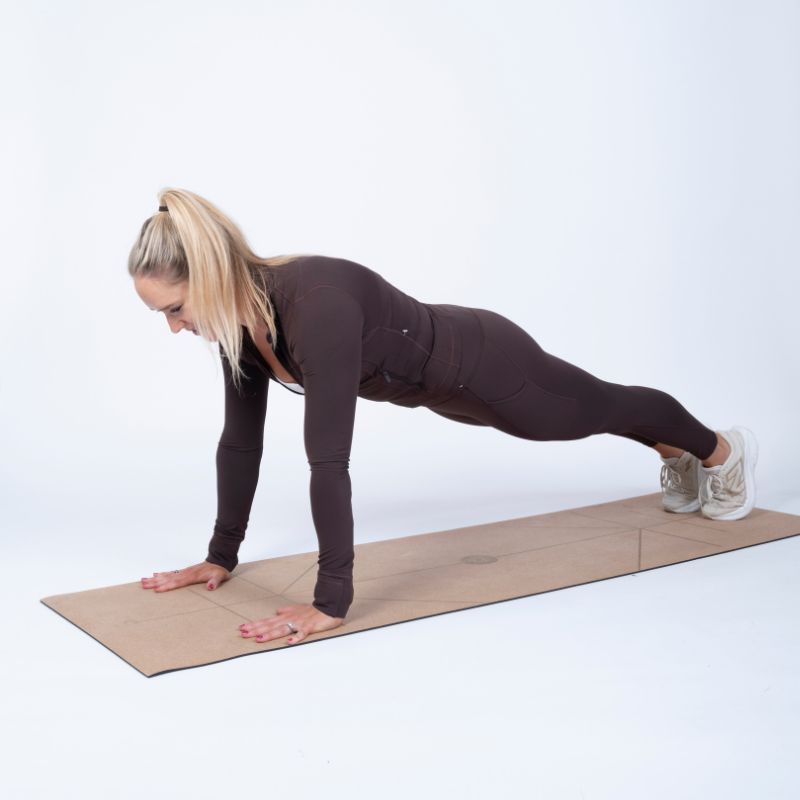
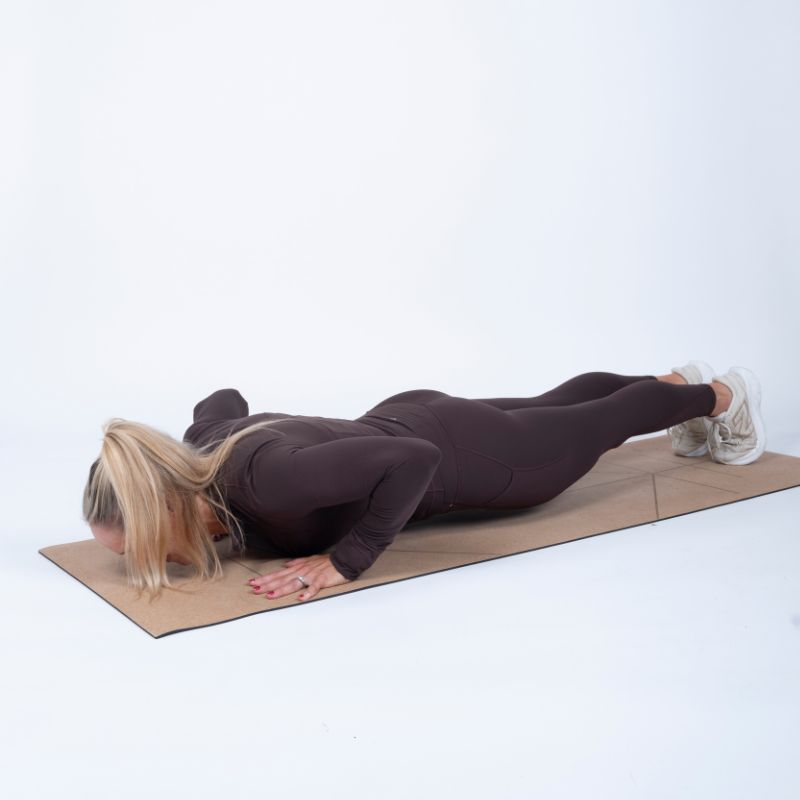
It's the move you've been aiming for - but it's crucial to follow the last few steps. Keep your core muscles tight, your hips elevated slightly to avoid dipping your back and stay firm in the plank position.
How to do a push-up properly:
- Adopt the full press-up position with hands wider than shoulders, chest over hands and your tummy muscles pulled in.
- Spread out your hands for better stability.
- Lower your body halfway to the floor (ideally to 90 degrees at your elbow).
- Push down into the floor with your hands to push the body back up to extended elbows.
Are push ups worth it?
There's no denying that push-ups can be difficult if you've never done one before - but they are worth it if you're looking to boost your upper body and core strength. They are one of the best core exercises to do at home and a one-way ticket to feeling stronger.
Compared to many other upper-body exercises, the push-up is also very efficient. It targets most muscles in the upper body - including the biceps, triceps, shoulders, arms, deep core muscles, and back muscles.
As a fitness instructor and the digital health editor of woman&home, I regularly find myself doing push-ups in the gym - either full push-ups as part of an upper-body workout, with help from resistance bands, or on my knees to warm up for other exercises.
Benefits of push ups
- Upper body strength: Push-ups engage the chest (pectorals), shoulders (deltoids), and tricep muscles which contribute to building strength and endurance in the upper body, says Sarah Campus.
- Improve core strength: Push-ups are one of the best core exercises to do at home, says Campus. "They strengthen the core muscles, including the abdominals and lower back, by maintaining a plank-like position," she says.
- Push-ups are functional: "They mimic natural pushing movements used in daily activities and sports, e.g. pushing open a door or pushing yourself up off the floor to get up."
- Better joint and bone health: Along with appropriate dietary changes - such as eating more high-protein foods, like the best protein powders for women - push-ups can contribute to stronger bones. "They also improve shoulder and wrist stability," the PT adds.
- Improved posture: This exercise "strengthens muscles that support proper spinal alignment", says Campus, so it's no surprise they are one of the best desk exercises.
- Calorie burning: Compound exercises like push-ups, lunges, squats, and so on engage "multiple muscle groups, promoting lean muscle building, fat loss, and boosting metabolism," she says.
- Convenient and versatile: Whether you're looking to do strength training for runners or get better at Pilates for beginners, push-ups can help. "They require no equipment and can be modified to suit various fitness levels," says Campus.
Why can't I do a push-up?
There's no denying that push-ups are difficult. Here are a few common reasons many women struggle to do one:
- Upper body strength: While many women are familiar with exercises to strengthen the lower body, stigmas and pressure to look a certain way, have prevented many women from strengthening upper body muscles that help with a press-up.
- Core stability: Unless you're doing yoga every day, you may not know how to engage your core or be too practised at doing it - but it's key when it comes to learning how to do a push-up properly.
- Frequency: Practice makes perfect and if you're not practising your push-ups a couple of times a week (3 to 5 is ideal, says Campus), you'll find it harder to make progress.
- Body weight and composition: "Higher body weight may make push-ups more challenging," says the PT, "However, strength gains will still happen with consistency."
- Recovery: While consistency is key, "avoiding injury and allowing the muscles to recover is crucial," she says. If you're working out more than three days a week, you might find your body needs a rest.







